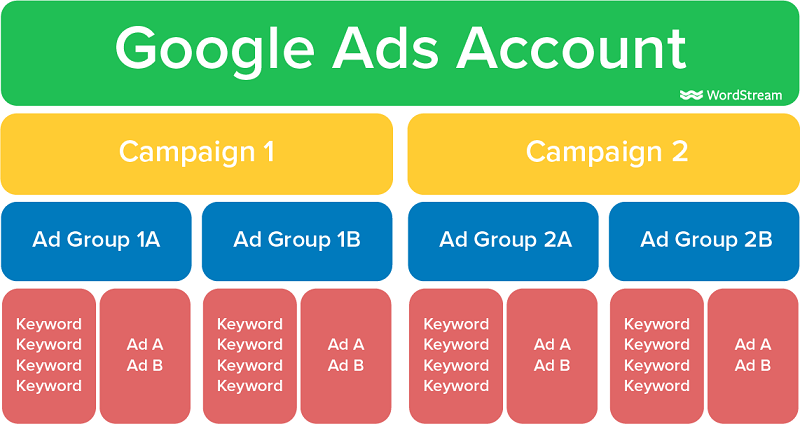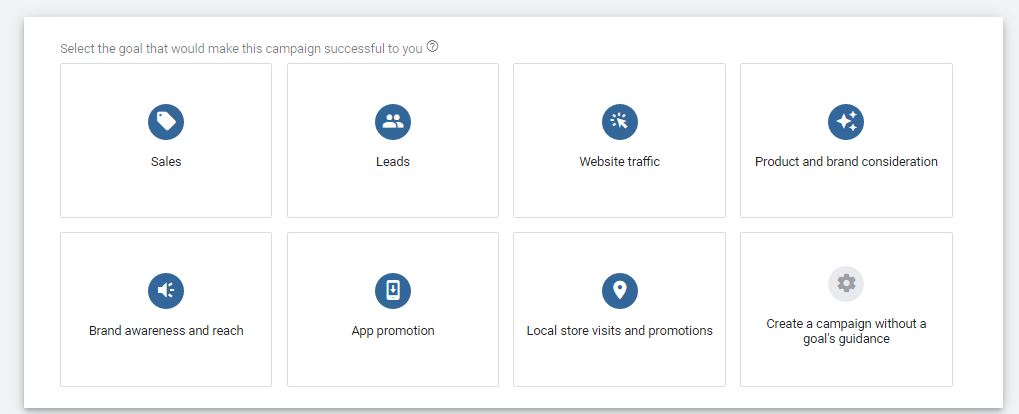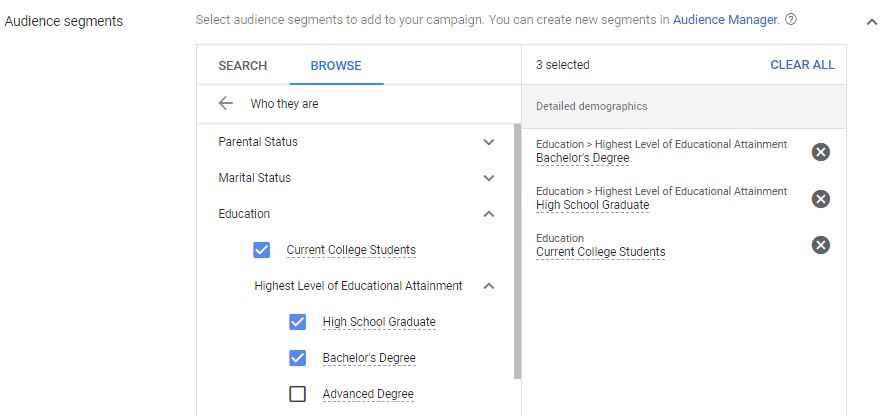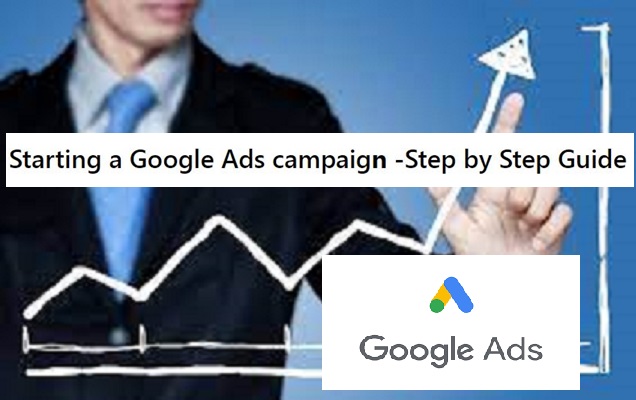Starting a Google Ads campaign –Step by Step Guide
 Dr M. Rahman, Associate Professor, Galgotias University
Dr M. Rahman, Associate Professor, Galgotias University
Google Ads (formerly Google AdWords) launched in 2000 is an online advertising platform developed by Google, where advertisers bid to display brief advertisements, service offerings, product listings, or videos to web users. Google Ads is Alphabet Inc’s main source of revenue, contributing US$134.8 billion in 2019.
It can place ads both in the results of search engines like Google Search (the Google Search Network) and on websites, mobile apps, and videos (the Google Display Network).
This article explains the structure of Google Ads campaign and the steps in developing an advertising campaign on Google Ads platform for improving business performance.
Structure of Google Ads Campaign

Google Ads is organized into three layers:
- Account – The account is associated with a unique email address, password, and billing information.
- Campaign – The campaigns have their own budget and settings that determine where your ads appear.
For example, A university offering undergraduate and postgraduate programs need to create different ad campaigns for admissions for each of these programs.
- Ad groups – The ad groups contain a set of similar ads and keywords. A campaign can have multiple ad groups.
The undergraduate program admission campaign can have different ad groups for BBA, BA(Eco), B.Com.
The ads and keywords for BBA ad campaign for admissions will be different from those of BA(Eco), B.Com ad campaign.
Starting a campaign in Google Ads
Step 1. Create a Google Ads A/C and login..
Step 2. Select ad campaign goal
Step 3. Select ad campaign type
Step 4. Target your audiences (customers)
Step 5. Setting bids and budgets
Step 6. Creating ad groups
Step 7. Create ads
Step 8. Measure and Optimise the campaign performance
Step1. Create a Google Ads A/C and login
Visit the Google Ads website https://ads.google.com/intl/en_IN/home/. To create Google Ads account, one needs an email address and website for your business.

Step 2. Select ad campaign goal
Advertising goal may be – Brand awareness, Website traffic, Generating Leads, Sales, App promotion etc. as shown below. These are options available to you in setting your goal. Select one goal that is best for you.
For example – A management college offering MBA program would like to attract more and more target customers to visit it’s website. So, in this example, the goal can be attracting ‘Website traffic‘.

Step 2. Select ad campaign campaign type
After setting the advertising goal, select the best campaign type from the following options from Google Ads.

The most commonly used campaign types include:
i) Search campaign — Ads can appear throughout websites on the Google Search Network. • Your keywords are linked to the words or phrases that someone uses to search on Google, then relevant text ads are shown on Search Engine Result Pages (SERPs).
ii) Display campaign — Ads can appear throughout the Display Network. This campaign type works by matching your ads to websites and other placements, such as YouTube and mobile apps, with content related to your targeting.
iii) Video campaign – Advertise on YouTube with Video campaigns on Google Ads. You can choose ad formats that serve with an option to skip the ad after five seconds or as a six second buffer between videos.
iv) Shopping campaign If you want to show products from your eCommerce store in Google Shopping, then you’ll need to setup the Google Merchant Center.
Step 3. Target your audiences/customers
Targeting will show your ads to the right customer groups and is a key part of a successful ad campaign.

There are different options of targeting in Google ads. You can pick up one targeting option or more than one in combination.
i) Audience targeting
Audience targeting helps you reach people based on who they are, their interests and habits, what they’re actively researching, or how they’ve interacted with your business. So, you can target on the basis of age, gender, marital status, education etc.

ii) Location targeting
With location targeting, you can target the geographic areas in which you’d like your ads to appear. you will be presented with the choice to target:
- People in or who show interest in your targeted area
- People in or regularly in your targeted area
- People searching for your targeted area
iii) Language targeting
Language targeting helps ensure that your ads will appear on websites that are written in the language of the customers you’d like to reach.
iv) Device targeting
You can reach your customers while they’re on the move by showing your ads when people are searching or visiting websites on their devices.
For example mobile phones with full browsers, such as iPhones and Android devices.
Step 4. Setting bids and budgets
Once you have decided which networks you want to display your ads on and who you want to show them to, there are two things you’ need to focus on:
Your budget: Your daily budget is the amount that you set for each campaign to indicate how much, on average, you’re willing to spend per day.
Your bidding strategy: Depending on which networks your campaign is targeting, and your advertising goals, you can determine which strategy is best for you.

The bid strategies that you can choose from:
•Cost-per-click (CPC) bidding: Use if you want to drive customers to your website.
•Cost-per-mile impression (CPM) bidding: Use if you want to make sure that customers see your message.
•Cost-per-acquisition (CPA) bidding: Use if you want to maximize conversions on your website.
Step 5. Creating ad groups and keywords
A campaign can have multiple ad groups. Each ad group contains a set of ads and keywords.
Example, BBA, BA(Eco), and B.Com can be different ad groups within undergraduate admission campaign.
For keywords relevant to your product or business, you should use ‘Google Keyword Planner’
Try to use appropriate keyword match types such as broad match, broad match modifier, phrase match, exact match and negative match.
Example – For BBA ad group, you can consider the following keywords:
“BBA Admission 2021”
BBA admission
[Best BBA institute]
Step 6. Create ads
After you have set up your ad group and keywords, you need to develop an ad for it. You need to write each element of an ad. For a search ad, the various elements are headlines, Display URL, Description and Ad extension.
An example of search ad for BBA admission is given below.

Step 7. Measure and Optimise the campaign performance
After the start of the campaign, you need to measure its performance with the help of multiple reports generated by Google Ads like Search term report, Auction insights report etc.

2 thoughts on “Starting a Google Ads campaign – Step by Step Guide”
Good one
Good one sir.